Counting
Counting is the process of determining the number of elements in a set or group. It is a fundamental concept in mathematics and is used in various mathematical operations and problem-solving situations.
Counting Numbers
Counting numbers, also known as natural numbers, are the set of numbers used for counting and ordering. They start from 1 and continue indefinitely (1, 2, 3, 4, ...).
Counting Principles
There are several counting principles that are used in mathematics, including:
- One-to-One Correspondence: This principle states that each item in one set can be paired with exactly one item in another set without leaving any out or pairing any item with more than one item.
- Counting by Multiples: This involves counting numbers by adding a fixed number each time (e.g., counting by twos: 2, 4, 6, 8, ...).
- Counting Backwards: This involves counting in reverse order, subtracting a fixed number each time.
Counting Techniques
There are various techniques used for counting, including:
- Counting by Tally Marks: Tally marks are used to count by making a mark for each item counted, with groups of five marks represented by a cross mark.
- Counting by Grouping: This involves grouping items into sets of a fixed number and counting the sets to determine the total count.
- Counting using Number Lines: Number lines can be used to visually represent the counting process and determine the position of numbers in relation to each other.
Practice Questions
- Count the number of apples in the following image:

- If you count by threes starting from 3, what is the 6th number you would say?
- Using tally marks, count the number of birds you see in the park: |||| ||| ||
By understanding the principles and techniques of counting, you can develop a strong foundation in mathematics and apply counting skills to various real-world scenarios.
[Count] Related Worksheets and Study Guides:
.◂Math Worksheets and Study Guides Fourth Grade. Calendar
Study Guide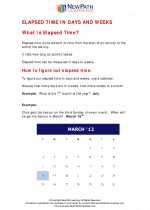 Calendar
Calendar  Activity Lesson
Activity Lesson Calendar Calculations
Calendar Calculations  Activity Lesson
Activity Lesson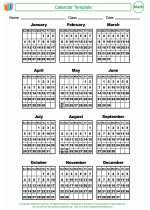 Calendar Template & Yearly Activities
Calendar Template & Yearly Activities  Activity Lesson
Activity Lesson February Calendar
February Calendar  Activity Lesson
Activity Lesson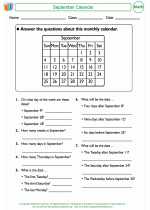 September Calendar
September Calendar  Activity Lesson
Activity Lesson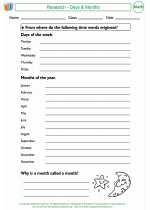 Research - Days & Months
Research - Days & Months  Activity Lesson
Activity Lesson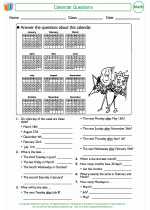 Calendar Questions
Calendar Questions  Worksheet/Answer key
Worksheet/Answer key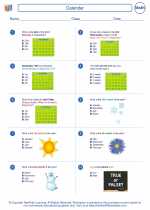 Calendar
Calendar  Worksheet/Answer key
Worksheet/Answer key Calendar
Calendar  Worksheet/Answer key
Worksheet/Answer key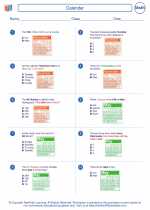 Calendar
Calendar 

 Activity Lesson
Activity Lesson
 Activity Lesson
Activity Lesson
 Activity Lesson
Activity Lesson
 Activity Lesson
Activity Lesson
 Activity Lesson
Activity Lesson
 Activity Lesson
Activity Lesson
 Worksheet/Answer key
Worksheet/Answer key
 Worksheet/Answer key
Worksheet/Answer key
 Worksheet/Answer key
Worksheet/Answer key

The resources above cover the following skills:
Knowledge of Measurement: Students will identify attributes, units, or systems of measurements or apply a variety of techniques, formulas, tools, or technology for determining measurements.
Applications in Measurement: Apply measurement concepts.
Determine start time, elapsed time and end time (Assessment limit: Use hour and half hour intervals).